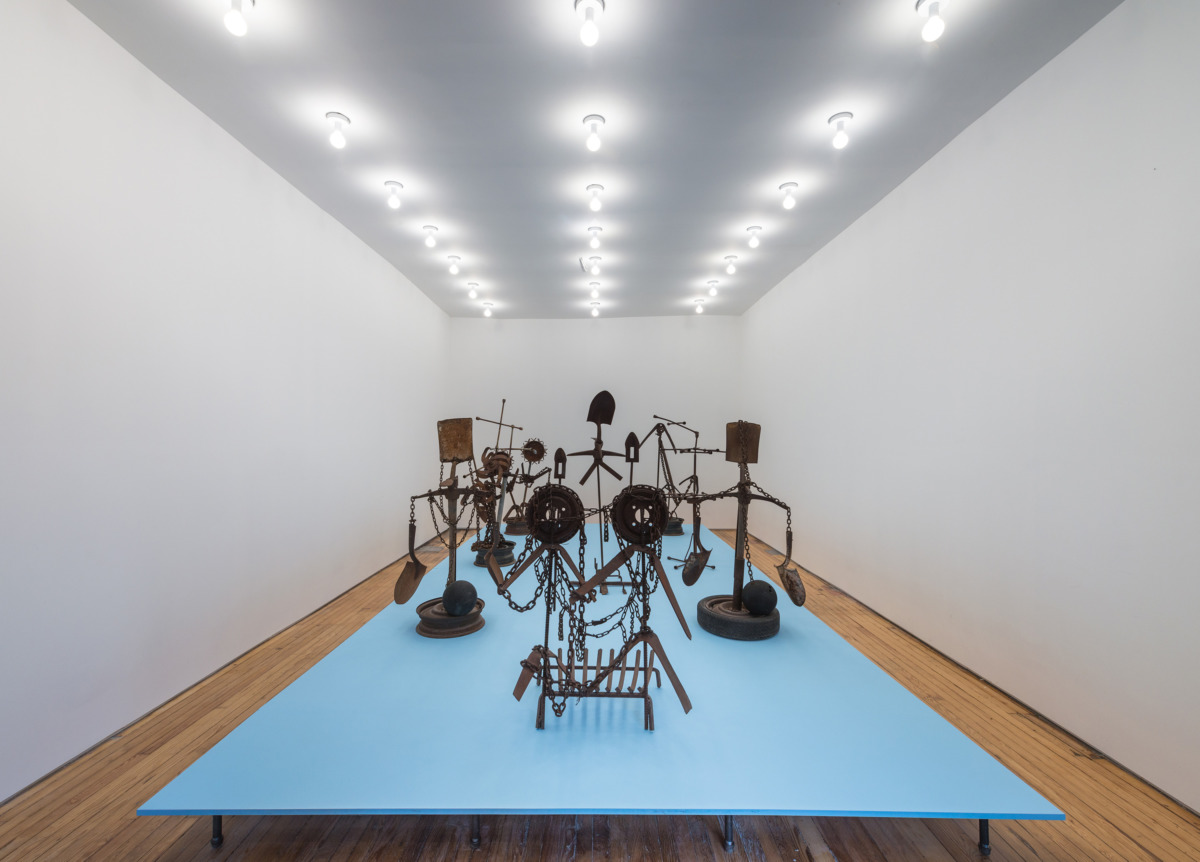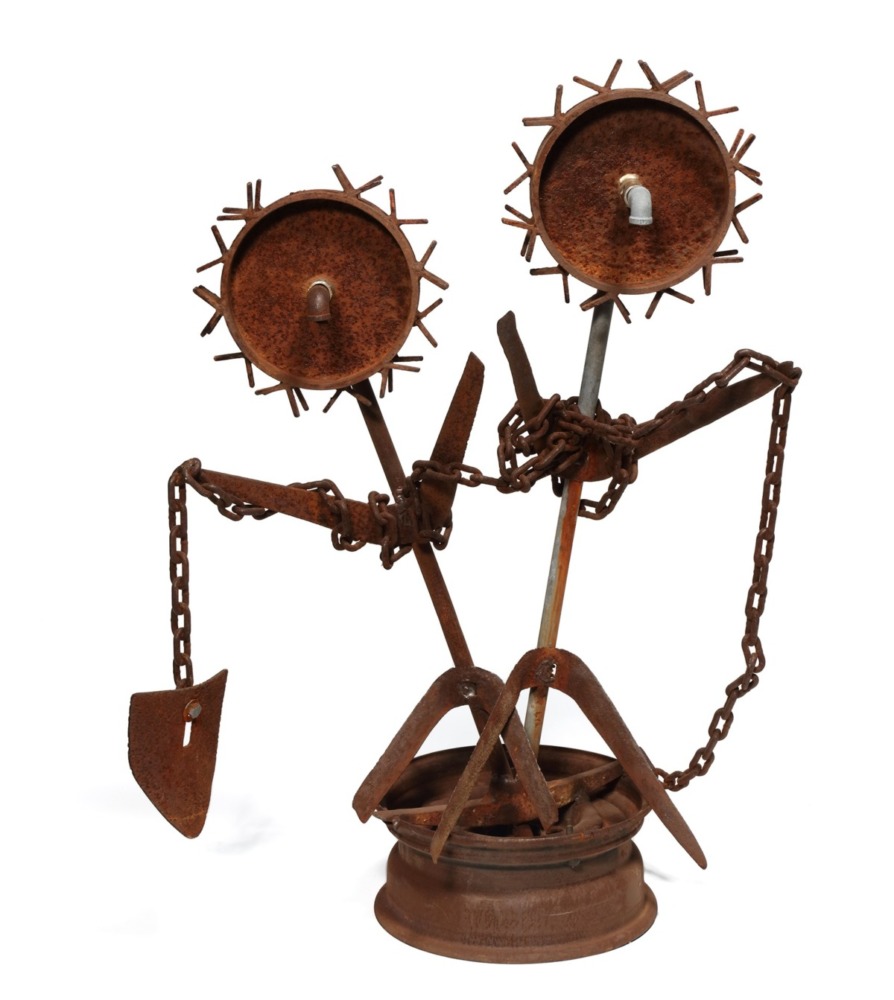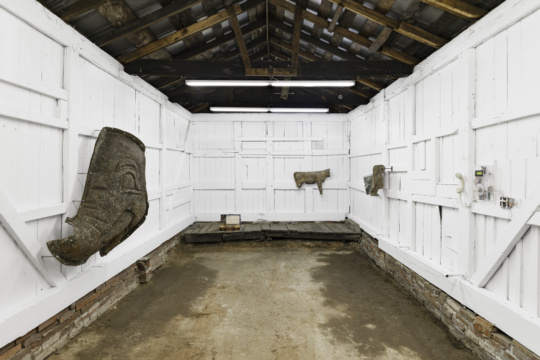
The issue with identity politics– most specifically its complacent rent-free lodging within the art world these past few years –is that no one is talking about junk. Junk is complicated. We find it on the side of the road or are handed it at an office party or realize it’s something we’ve been given and are made to take it home. We don’t make it, we don’t ask for it, we don’t seek it out and it is very strange to talk about in public or categorize. As an academic field, history is largely invested in close examinations of things used, left behind and discarded; therefore, like identity, history is also concerned with junk. Junk isn’t easy, identity isn’t easy, history isn’t easy, and neither is the work of Birmingham-based artist Joe Minter presented in MARCH gallery in the East Village neighborhood of New York.

A more sympathetic branding of “junk” might be ephemera – transience– particularly in the realm of context: “One man’s trash, another man’s treasure”. Junk is constantly passing through value. Though the Joe Minter’s work might use formerly “junk” or “scrap” materials they are very much art works, skillfully assembled artifacts of cultural and agricultural heritage the artist has driven towards drastic conceptual ends. Solidly built and stoically staged atop a longer-than-wide rectangular platform painted robin’s egg blue platform are the nine free-standing sculptures that form the exhibition Joe Minter: We Lost Our Spears. Displayed about twenty inches off the ground the rusted metal sculptures that look like they’ve been there forever even though they aren’t as old as we would think.
One of the more frightening successes of the work lies within its ability to relate. The longer you stand with the sculptures, the more evident their personhood becomes and the more clear the artist’s tactful allusions to form and anatomy…and then the trouble begins. Largely because here we have in front of us a group of people, suggestions of bodies, created out of discarded tools, brown and ashy with rust suggestive of long lengths of time exposed to the elements without care. Specific tools for manual labor with the only hint towards leisure – two bowling balls are active weights helping secure the bottoms of two sculptures. People/bodies/objects that at one point were dangerous or useful or both, and the realization that, in most parts of the world, this is how economies continue to work. In a cruel world driven by physical output, people are sometimes bodies, bodies are sometimes tools. And tools, when their use has been fulfilled, are relegated to waste. Thankfully, there are artists and historians like Minter who are willing to engage them.

The sculptures of the exhibition are related to those in the African Village in America, an artist environment begun by Minter in 1989 when prompted by news of the construction of a Civil Rights Museum. It said that Minter wanted to create monuments for the “foot soldiers” of the movement as he was worried that in retelling of the stories of black liberation many would be forgotten. When I found myself shocked that each of the works had their own titles, it was like I was realizing that the American Civil Rights Movement didn’t actually take place in black-and white all over again. I fell for the trap in understanding history that Minter has been trying to roadmap for years. Uncomplicated and superficial assumptions of history and identity have been able to overstay their welcome because simple, consumable, and prevalent narratives are seductive, no matter their true depth. I was so wrapped up in the effect once I was invested that I was unable to see the sculptures for what they each were: individual works comprised of multiple complex and contentious parts with stories and histories of their own, bound, united and chained together in active pursuit of a resilient and more secure whole.
Joe Minter: We Lost Our Spears is on view at March Gallery, New York thru April 2.




